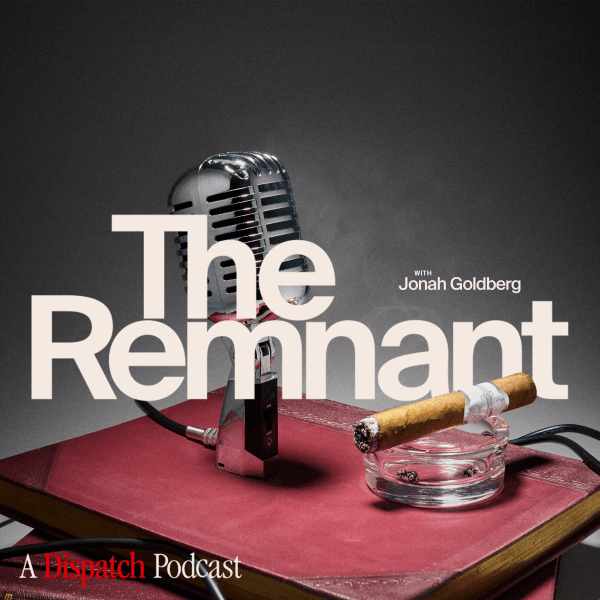Protein is having a moment. Walk the aisles at a grocery store and you'll see row upon row of protein chips, protein muffins, protein cereal, even protein candy bars. Entire industries are emerging around the creation and processing of these novelty products. Processed protein is big business, and Americans are buying it: In a recent survey, over 70 percent of Americans said they tried to increase their protein intake this year.
But American diets aren’t actually short on protein. They're short on fiber and vitamins and minerals that come not from any one macronutrient but from a variety of natural, whole foods—things with leaves and skins and seeds—instead of the ultra-processed foods that make up the majority of the average American’s diet. Indeed, the disconnect between Americans’ desires and their ideal diets is such that the latest version of the Dietary Guidelines for Americans, which Secretary of Health and Human Services Robert F. Kennedy Jr. promised as soon as August, is expected to emphasize the importance of protein—but from plant-based sources, over meat and dairy.
How did we get here? A number of factors have contributed to the reign of protein as a health-food virtue-signal: the rise of Ozempic and doctors’ calls for GLP-1 drug users to eat more of it to keep up muscle tone, the influence of the Make America Healthy Again (MAHA) movement and its skepticism of ultra-processed products over whole foods, and above all, consumers’ desire to marry health (or the appearance of it) with convenience.
This last factor is the reason why, despite what Kennedy’s dietary guidelines may advise, the rise of protein consciousness seems unlikely to move the needle on the nutrition-related health crises—overweight and obesity, heart disease, diabetes—that plague the majority of Americans. Protein alone can't make America healthy again, but it's an enticing shortcut that more consumers are taking with every processed protein product—and most of them are very, very processed—that hits the shelves. To be able to recognize all this junk in health-food clothing, one first has to understand Americans’ love affair with fast food.
Last fall seemed to be the inflection point for protein. In August, Kennedy yoked his MAHA movement to the Trump presidential campaign, giving health-consciousness—and skepticism of anything considered “unhealthy”—an energized platform beyond social media and the doctor’s office. The new class of weight-loss drugs—that is, Ozempic and its fellows—had also been approved by the FDA. By September the market was ripe for a new kind of convenience food, and that's when Nestlé, the world’s largest food company, released a new line of high-protein frozen meals targeted at weight-loss drug users. Grouped under the brand name Vital Pursuit, the meals are marketed as the perfect convenience food for newly health-conscious consumers: The cauliflower crust pepperoni pizza packs 22 grams of protein for under 400 calories.
This pizza tastes like a cardboard prototype of a pizza. Measuring just over six inches in diameter, made with that trendy cauliflower crust and topped with reduced-fat mozzarella cheese, it’s “air fryer ready . . . for added convenience.” The pie I unwrapped from its plastic boasted a grand total of four pepperoni, a shockingly orange sauce, and a nifty kind of topping formulation that popped off the crust in a single disk when accidentally knocked against the baking sheet. It is convenient, yes, but it does not look healthy. Nor does it taste that way.
It did taste, however, much like every frozen pizza I’d eaten in my childhood: a monoflavor vaguely reminiscent of tomato, cheese, and flour—and strongly reminiscent of Friday nights, when my family and I ate frozen pizzas and watched Disney movies. This rush of nostalgia made me realize something that Nestlé knows well: When it comes to food, the important thing is how one feels about it. And if consumers now want to feel healthy while indulging in ultra-processed foods—well, just add protein.
Of course, this is a wolf in sheep’s clothing that Americans should recognize by now. While the term “junk food” has been around for a long time, figuring out what exactly is wrong with it is a recent, and quite popular, endeavor. Dieting took off in the late 1800s and ultra-processed foods began to appear early in the next century, but American obesity rates started rising at a steep rate in the 1970s as fast food and convenience meals—and the advertising of them—really took off. The theories about the reasons behind this nationwide weight gain are many, and many have a grain of truth: too few fruits and vegetables, sedentary lifestyles, poverty, food deserts. As the problem continues to worsen, people point fingers in all directions.
The main thread that unites all of these complex causes is the idea that Americans want to lose weight—through diets, programs, drugs, apps, and more—and then they confront reality in the form of a fast-food sign. The idea that our diets are a problem really gripped the nation with the 2001 publication of Eric Schlosser’s hit book Fast Food Nation, which argued that quintessential American restaurants aggressively marketed food that they knew was unhealthy—especially to children, to get them hooked for life. The investigative reporter Michael Moss expanded this idea to all processed food in a popular 2013 exposé, claiming that companies formulate their products to hit the “bliss point”—that is, the irresistible combination of salt, sugar, and fat that keeps customers coming back for more, presumably forever.
Long before MAHA, then, Americans were hearing the claim that junk food was intrinsically addictive because of what’s in it. But as fast food companies responded to the backlash by promising to lower fat and salt content over the next few years, some researchers noticed something odd: Americans’ weight wasn’t decreasing, and neither was their consumption of fast and fatty foods—in fact, the opposite was happening.
And some researchers couldn’t help but wonder whether it wasn’t so much the ingredients of foods, but the way these ingredients were treated by food manufacturers. Chris van Tulleken’s 2023 book Ultraprocessed People argued that the processing itself—the stripping or “refining” of flours, the “isolating” of proteins and “hydrolyzing” of fats—makes what was once food into something that the body can’t digest. He, along with many other medical professionals, claimed that eating ultra-processed food leads to diseases like those linked to obesity: Type 2 diabetes, heart disease, metabolic syndrome. And the food industry essentially regulates itself thanks to loopholes such as the Generally Recognized as Safe (GRAS) designation, which essentially allows companies to self-determine whether a new ingredient is safe.
Which brings us back to protein. By these criteria, Vital Pursuit pepperoni cauliflower crust protein pizza—and many of its fellow protein-packed processed foods—is simply a newer member of an older food category, one that is simultaneously “health food” and junk. Nestlé’s strategy seems based on the bet that consumers won’t see the contradiction here—and if they do, habit and nostalgia will win.
But Nestlé isn’t the only company that is trying to enter the protein-conscious era, nor is it the first. The protein-pumping trend appeared in nutrition and workout circles for years before weight loss drugs and MAHA took it fully mainstream. Core Power protein shakes, owned by Fairlife and distributed by Coca-Cola, launched in 2012 and in recent years has inspired a mania reminiscent of the COVID toilet paper hoarding days. Predictably, Fairlife’s viral fame led to empty Costco shelves—and Fairlife is building new facilities to ramp up production, while members of weight loss drug support groups on social media continue to tout them as a “healthy” meal replacement.
As with the Nestlé pizzas, though, the list of ingredients on a Core Power shake includes plenty of evidence of processing. The natural sugar and fat in the milk is replaced with plant-based additives that imitate the texture and flavor of a sugary milkshake, in a way that makes the nutrition label look “healthier.” Core Power shakes use the thickening agent carrageenan to give that impression of milky creaminess, the emulsifier cellulose gel to replace fat, and cellulose gum for texture and consistency. The shakes’ sweetness comes from a mix of the “natural” plant-based sweeteners Stevia and monkfruit, along with the artificial sweeteners acesulfame potassium and sucralose.
And then there is the type of protein itself in these “healthy” products. Fairlife protein shakes use ultra-filtered milk, which is processed to increase protein content and reduce lactose, the natural sugar in dairy products. But some “healthy” products use even more highly processed, and questionable, sources of protein. One popular type of protein bar (among the infinite profusion of options) for those on weight loss drugs, according to an informal survey of posts in a Facebook support group, is made by Barebells. It’s a Swedish company that launched in 2016—and is notably not owned by a mega-food corporation—that offers the full range of imitation dessert flavors from cookie dough to caramel chocolate to key lime.
Barebells uses a “milk protein blend” that includes calcium caseinate and whey protein isolate, hydrolyzed bovine collagen, whey protein isolate. Behind all these terms is, again, lots of processing: Whey protein can be packaged into any flavor of protein bar one can dream of. Soy often appears on nutrition labels as an “isolate,” which is blasted with chemicals to “purify” it for easy use in all sorts of protein boosters, from pizza to those muscled-up pseudo-Pop-Tarts in checkout aisles from GNC to CVS.
Sure, a food company adding protein to a nutritionally empty product is better than nothing. But despite what the protein craze suggests, pumped-up protein does not put consumers on the fast-track to health. Indeed, nutritionists are increasingly warning that overloading on protein can backfire: The body can only make use of a certain amount of protein for energy before the body starts storing it as fat, and overdoses of certain amino acids, which combine to form proteins, can lead to cardiovascular disease. And for weight-loss drug users, the drugs’ appetite-suppressing effects actually mean that consuming a variety of foods matters even more in order to get necessary nutrients with fewer calories.
Switching nutrients to cut calorie, carb, and fat counts doesn’t seem to magically create healthy food, despite food companies’ claims to the contrary. But when criticisms arise, the ultra-processed food industry’s go-to tactic consists of “reformulation”: changing recipes by using different materials such as starches or flavorings to provide the “same great taste!” W.K. Kellogg Co. followed this strategy after the U.K.’s High Fat Sugar Salt (HFSS) regulations went into effect in 2022, placing limits on how and where foods high in these common markers of junk food could be marketed. In response, the company rolled out an additional, “non-HFSS” version of its most popular offering among children, Coco Pops, with marginally lower sugar content.
This episode shows that regulation can certainly be done. But it can also blur the already gray line between what’s healthy and what’s not. After all, the non-HFSS Coco Pops are by law a healthy choice now—something even the most ambitious cereal marketer would have had a hard time convincing even the most persuadable mother about before.
And with Kennedy asking food companies to make a “voluntary, protective pledge” to remove additives such as food dyes from their products, this dynamic could well play out in the United States, in ways that could blur the lines of healthy food even more—and reinforce old habits. After all, no matter how many people are on Ozempic, Americans aren’t going to stop eating nachos during the Super Bowl. Food marketers know well the power of nostalgia in determining what consumers will crave: The Coco Pops you ate for breakfast or the Doritos you ate while watching football as a kid might be what you crave now.
But the magic of modern food processing is that both cereal and chips can be adapted, at least on their face, to nutritional requirements. This ambiguity favors large food companies, which have far greater resources to make over their established brands than an organic farmer does. And that’s not even counting the time it takes for scientists and regulators to catch up. Travis Masterson, who directs the Health, Ingestive Behavior, and Technology lab at Penn State, described watching Nestlé and other food companies respond to the rise of the new weight loss drugs from inside the scientific community: “Those companies are doing massive amounts of market research on their consumers all the time,” he said. “If as scientists we're starting to look at the changes in diet, they're light years ahead of us on that because they can do things faster and easier than we can.”
In this sense, Kennedy may be behind the times in the fight to Make America Healthy Again through cutting ultra-processed foods. In the age of Ozempic and MAHA, the centrality of ultra-processed food to Americans’ diet seems less under threat than undergoing a new stage of evolution—a protein-packed one. We say we want to eat better, but what we really want is to feel better about eating. And food companies, unbridled by any powerful regulation, are primed to give us what we want.






Please note that we at The Dispatch hold ourselves, our work, and our commenters to a higher standard than other places on the internet. We welcome comments that foster genuine debate or discussion—including comments critical of us or our work—but responses that include ad hominem attacks on fellow Dispatch members or are intended to stoke fear and anger may be moderated.
With your membership, you only have the ability to comment on The Morning Dispatch articles. Consider upgrading to join the conversation everywhere.